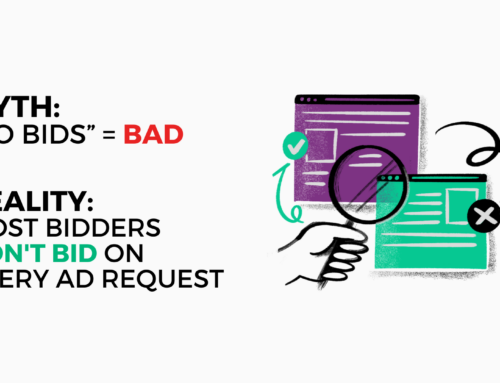Bits and Bobs from around the industry:
Leading Trade Groups Define “Made for Advertising” Websites
A consortium of marketing and advertising trade organizations, including the ANA, 4A’s, WFA, and ISBA, has released a detailed definition of “Made for Advertising” (MFA) websites, which are sites created primarily to buy and sell advertising inventory. The organizations developed these MFA definitions to address concerns about MFA websites, which comprise 21% of impressions and 15% of ad spend, according to a recent ANA report. MFA sites often use sensational headlines, clickbait, and provocative content to attract visitors and generate ad revenue, typically featuring low-quality content and intrusive ads. The trade organizations highlighted characteristics of MFA sites, such as a high ad-to-content ratio, rapidly auto-refreshing ad placements, and a high percentage of paid traffic sourcing. They recommended that advertisers independently determine if MFA sites align with their brand suitability standards and clarify their tolerance for MFA inventory in campaigns. The ANA Programmatic Media Supply Chain Transparency Study aims to address transparency and productivity issues in the programmatic media supply chain.
TripleLift Releases Industry’s First Test Results of 3rd Party Cookie Replacement Solution
TripleLift, an ad tech platform, has released the industry’s first large-scale test results demonstrating the effectiveness of its first-party data targeting solution, TripleLift Audiences, across the web, especially in cookie-constrained environments. These results show significant improvements for both advertisers and publishers when third-party cookies are unavailable. The solution aims to address the portion of the internet already functioning without cookies and provides a way forward as the industry prepares for further addressability outages, particularly when Google starts deprecating third-party cookie usage in its Chrome browser ecosystem in January 2024. Currently, 47% of global ad requests occur in cookie-free environments. TripleLift Audiences leverages publisher first-party data to improve targeting and has delivered positive results for both advertisers and publishers, with lower costs per click (CPC) and increased CPMs, respectively. This solution is available in the United States and will expand to European markets in 2024.
Here’s Some Differentiation: SSPs Disagree About Their Responsibility For Vetting DSPs
The bankruptcy of MediaMath has sparked discussions within the digital advertising industry about the roles and responsibilities of supply-side platforms (SSPs) in protecting publishers from financial risks associated with demand-side platforms (DSPs). Publishers are raising concerns about SSPs that resort to “clawbacks” when DSPs fail to meet their financial obligations, leaving publishers to bear the financial burden.
Some publishers argue that SSPs should assume the primary responsibility for assessing the creditworthiness of DSPs they partner with. They believe that SSPs, as intermediaries, should take on the role of vetting demand partners to ensure they can fulfill their financial commitments. Publishers assert that SSPs are better equipped to evaluate DSPs’ financial stability, as they have access to more comprehensive data and tools for assessing risk.
However, not all SSPs share this perspective. Some SSPs, such as PubMatic, maintain that the ultimate responsibility for assessing risk lies with the publisher. They argue that they provide self-service tools to publishers, allowing them to decide which demand partners to work with. These SSPs emphasize that they offer these tools to empower publishers to make informed decisions about their partnerships. The use of sequential liability clauses, which protect SSPs from financial losses in the event of DSP payment defaults, is common in contracts between SSPs and publishers. While SSPs have the legal right to include these clauses to safeguard their business interests, they also have an ethical responsibility to ensure that they do not overextend credit to risky DSPs. Some SSPs have taken proactive measures to mitigate risk by limiting the credit they extend to certain DSPs and closely monitoring their financial health.
Publishers argue that SSPs should prioritize protecting their partners’ interests over their own financial interests. They emphasize that SSPs play a crucial role in the digital advertising ecosystem and should be held accountable for safeguarding publishers from financial losses caused by DSP defaults. As the digital advertising industry continues to evolve and adapt to changing market conditions, the debate over the responsibilities of SSPs in risk management is likely to persist. Publishers are calling for greater transparency and risk assessment from SSPs, while SSPs may seek to strike a balance between protecting publishers and managing their own financial interests.






